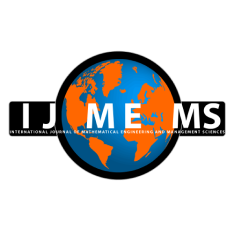Ali Muhammad Ali Rushdi
Department of Electrical and Computer Engineering, Faculty of Engineering, King Abdulaziz University, P. O. Box 80204, Jeddah 21589, Saudi Arabia.
Omar Mohammed Ba-Rukab
Department of Information Technology, Faculty of Computing and Information Technology, King Abdulaziz University, P. O. Box 344, Rabigh, 21911, Saudi Arabia.
DOI https://dx.doi.org/10.33889/IJMEMS.2017.2.1-002
Abstract
The paper utilizes the Karnaugh map in a pedagogical calculation of the Shapley-Shubik index of voting power, which is perhaps the most prominent such index for managerial, political, and engineering voting systems. The Karnaugh map has features that allow it to readily implement this calculation, namely: (a) it can conveniently represent pseudo-switching functions of the form g= B_2^n →R, (b) it can immediately detect the number of orderings in going from one of its configurations (cells) to another, and (c) it visually identifies a pair of configurations that is critical w. r. t. a certain voter, which are a primitive winning coalition of which this voter is a member and a corresponding primitive losing coalition that results when this voter defects. The paper offers a detailed description of these three features and of the associated calculations using the celebrated system of the European Economic Community as a running example.
Keywords- Shapley-Shubik index, Voting power, Karnaugh map, Pseudo-switching function, Ordering, Winning coalition.
Citation
Rushdi, A. M. A., & Ba-Rukab, O. M. (2017). Map Calculation of the Shapley-Shubik Voting Powers: An Example of the European Economic Community. International Journal of Mathematical, Engineering and Management Sciences, 2(1), 17-29. https://dx.doi.org/10.33889/IJMEMS.2017.2.1-002.



